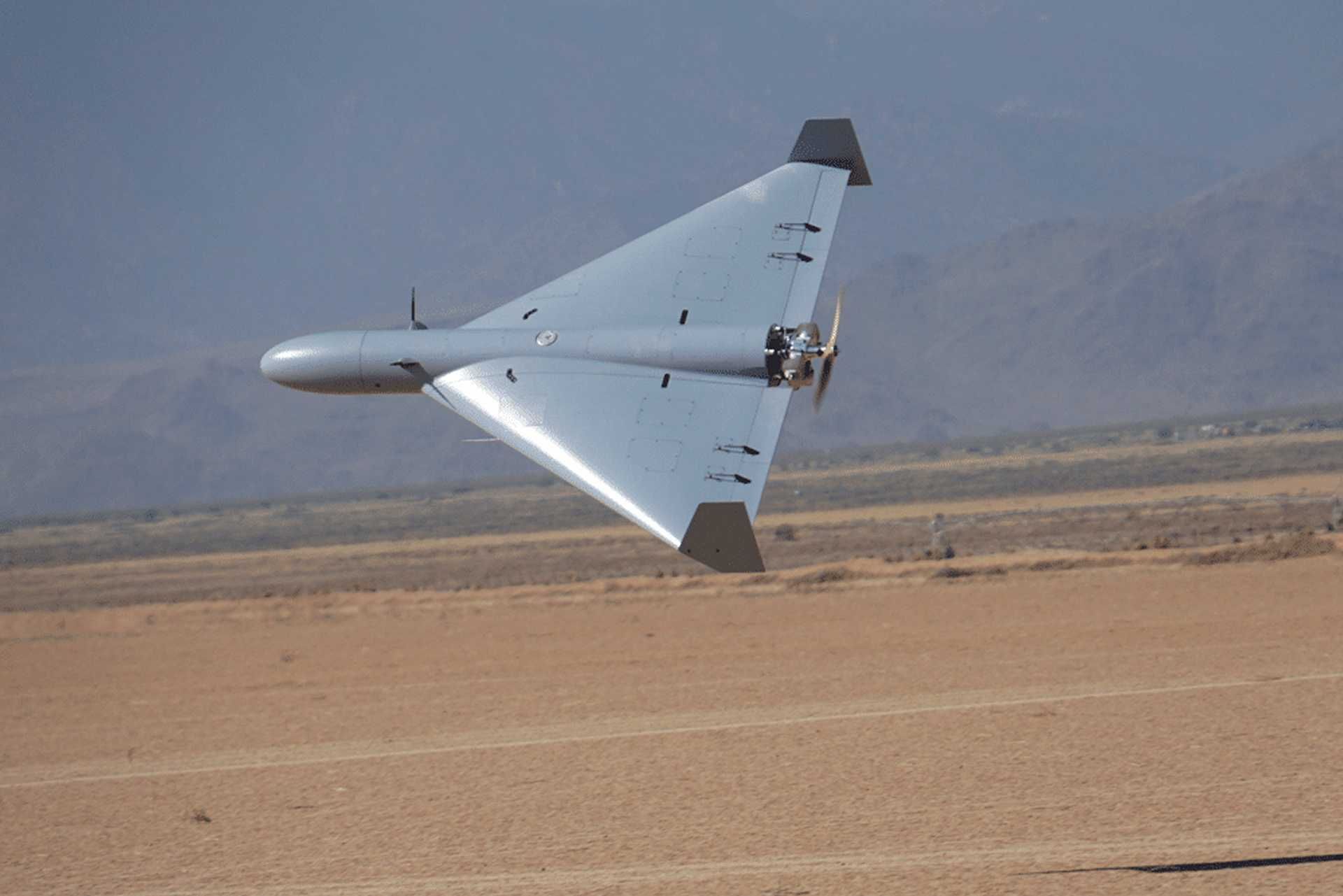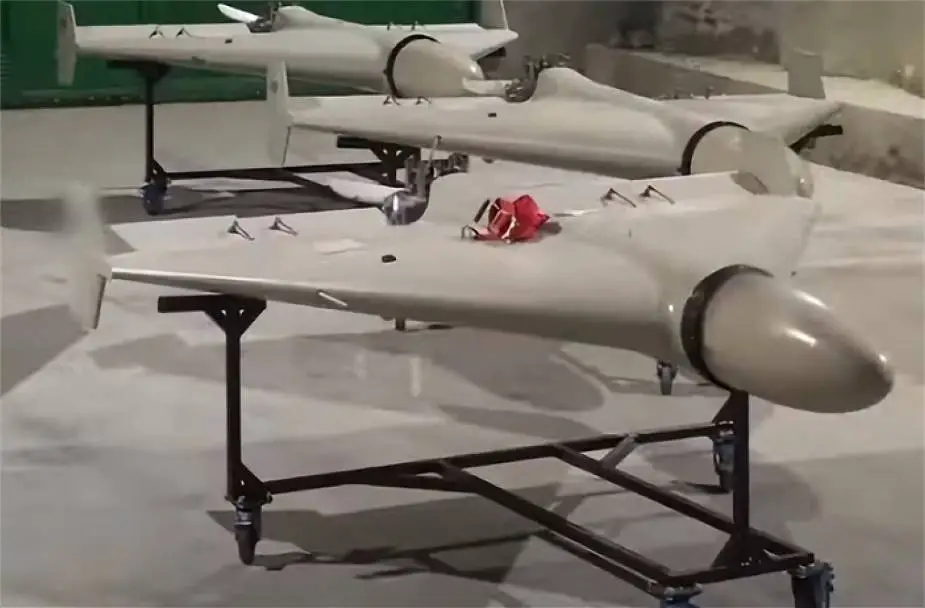US Fires Back with LUCAS: Pentagon Unveils Low-Cost Kamikaze Drone to Counter Iran’s Shahed-136 Success
Spearheaded by Arizona’s SpektreWorks, LUCAS offers the U.S. a modular, combat-tested, low-cost unmanned strike platform designed to counter emerging drone warfare trends driven by Iran and Russia.
In a strategic counter to Iran’s Shahed-136 drones that have gained notoriety in Ukraine and the Middle East, the United States has officially unveiled LUCAS (Low-Cost Uncrewed Combat Attack System)—a cost-effective, next-generation loitering munition designed to dominate the future battlespace.
The combat drone was showcased on July 16 during a high-profile Pentagon exhibition featuring multi-domain autonomous systems, where U.S. Secretary of Defense Pete Hegseth personally reviewed the platform.
LUCAS represents a critical step in the Pentagon’s broader initiative to expand the availability of affordable, scalable, and combat-ready unmanned systems across multiple theatres of operation, particularly the Indo-Pacific where drone warfare and distributed operations are rapidly becoming the new normal.
Developed by SpektreWorks, an Arizona-based defense innovator, LUCAS is engineered as a Group 3 Unmanned Aerial System (UAS)—a classification reserved for drones weighing under 1,320 pounds (600 kg) and capable of operating at medium altitudes and extended ranges.
“LUCAS is a reliable and cost-effective Group 3 Unmanned Aerial System (UAS) designed to perform in austere conditions with minimal logistical requirements,” SpektreWorks emphasized in its official release.
With a modular, open-architecture design, LUCAS supports a broad range of mission profiles, including ISR (Intelligence, Surveillance, Reconnaissance), tactical strike, electronic warfare, and battlefield communication relay—offering a Swiss-army-knife-like capability for military planners.
In its kamikaze configuration, LUCAS mimics the operational doctrine of Iran’s Shahed-136 but with enhanced adaptability, reusability, and system integration potential across U.S. and allied forces.

What sets LUCAS apart is its seamless integration into the Pentagon’s Multi-domain Unmanned Systems Communications (MUSyC) mesh network, allowing it to act as a communication relay hub—crucial in contested environments where satellite or terrestrial communication is compromised.
This makes LUCAS a strategic asset for joint and coalition operations, enabling real-time secure communications between U.S. and allied forces in high-threat zones such as the South China Sea, Taiwan Strait, or other areas within the USINDOPACOM area of responsibility.
LUCAS supports multiple launch configurations, most notably Rocket-Assisted Take-Off (RATO) and truck-mounted rapid deployments, ensuring its ability to operate from remote or forward-deployed locations with minimal infrastructure.
This capability aligns with the U.S. Department of Defense’s push for “expeditionary autonomy”—the ability to project lethal airpower without dependence on fixed airfields or long logistical chains, a necessity in an era of near-peer conflict.
SpektreWorks has confirmed that LUCAS has already completed its testing phase and is now ready for full-rate production, with operational integration into U.S. and allied drone fleets expected within the next 12 to 18 months.
The emergence of LUCAS reflects a growing recognition within the Pentagon that the future of air dominance may no longer lie solely in billion-dollar stealth fighters, but also in swarms of cheap, smart, and lethal drones that can saturate enemy air defenses, conduct persistent surveillance, and deliver precision strikes with minimum risk to human operators.

Iran’s Shahed-136 drones—believed to cost around USD 20,000–40,000 (RM 93,000–186,000) per unit—have demonstrated battlefield resilience and psychological impact in Ukraine, often overwhelming Ukrainian air defense batteries through swarm tactics.
While exact cost figures for LUCAS remain undisclosed, defense analysts speculate its price tag falls well below the USD 100,000 (RM 465,000) threshold, making it an economically viable platform to be fielded en masse.
In operational terms, LUCAS can function both as a standalone loitering munition and as a node within larger kill-chain networks, further amplifying its battlefield utility in Anti-Access/Area Denial (A2/AD) scenarios and maritime littoral operations.
The timing of LUCAS’ unveiling is particularly significant given the intensifying drone arms race between major powers and the shifting doctrines toward “attritable” airpower—systems deliberately designed to be expendable but effective in degrading enemy capabilities.
U.S. military strategists see platforms like LUCAS as essential for future engagements in high-intensity conflict zones, especially in Taiwan-related contingencies where sheer numbers and resilience of drone fleets could tip the balance.
Moreover, LUCAS may also serve as a stepping stone for AI-enabled autonomous targeting, giving warfighters the option to deploy smart munitions that can loiter for extended periods, choose targets of opportunity, and execute without real-time operator input.
As the U.S. rushes to narrow the tactical edge gained by adversaries such as Iran, Russia, and China, the deployment of LUCAS underscores the Pentagon’s pivot toward a more distributed, decentralized, and drone-heavy force posture.

LUCAS also aligns with ongoing U.S. efforts under the Replicator Initiative, which aims to deploy thousands of low-cost, AI-capable drones within the next 24 months to counter China’s rapidly modernizing armed forces.
For U.S. allies in the Asia-Pacific region, LUCAS offers not just a powerful kinetic option but also a plug-and-play solution for multi-domain interoperability, particularly for nations facing drone saturation threats or requiring affordable deterrent capability.
The U.S. military-industrial complex is betting big that tomorrow’s wars will be won not just by F-35 stealth fighters or B-21 bombers, but by fleets of nimble, modular, and highly adaptable UAVs like LUCAS, capable of hitting hard, fast, and smart.
In this new era of drone warfare—where cost, quantity, and AI-driven autonomy may prove more decisive than sheer platform sophistication—LUCAS could well represent the vanguard of American battlefield innovation.
With global tensions escalating from Ukraine to the South China Sea, and with drone technology becoming the centerpiece of modern military doctrine, the rollout of LUCAS sends a clear signal: the U.S. is not just catching up—it’s setting the tone for the next generation of aerial warfare.


